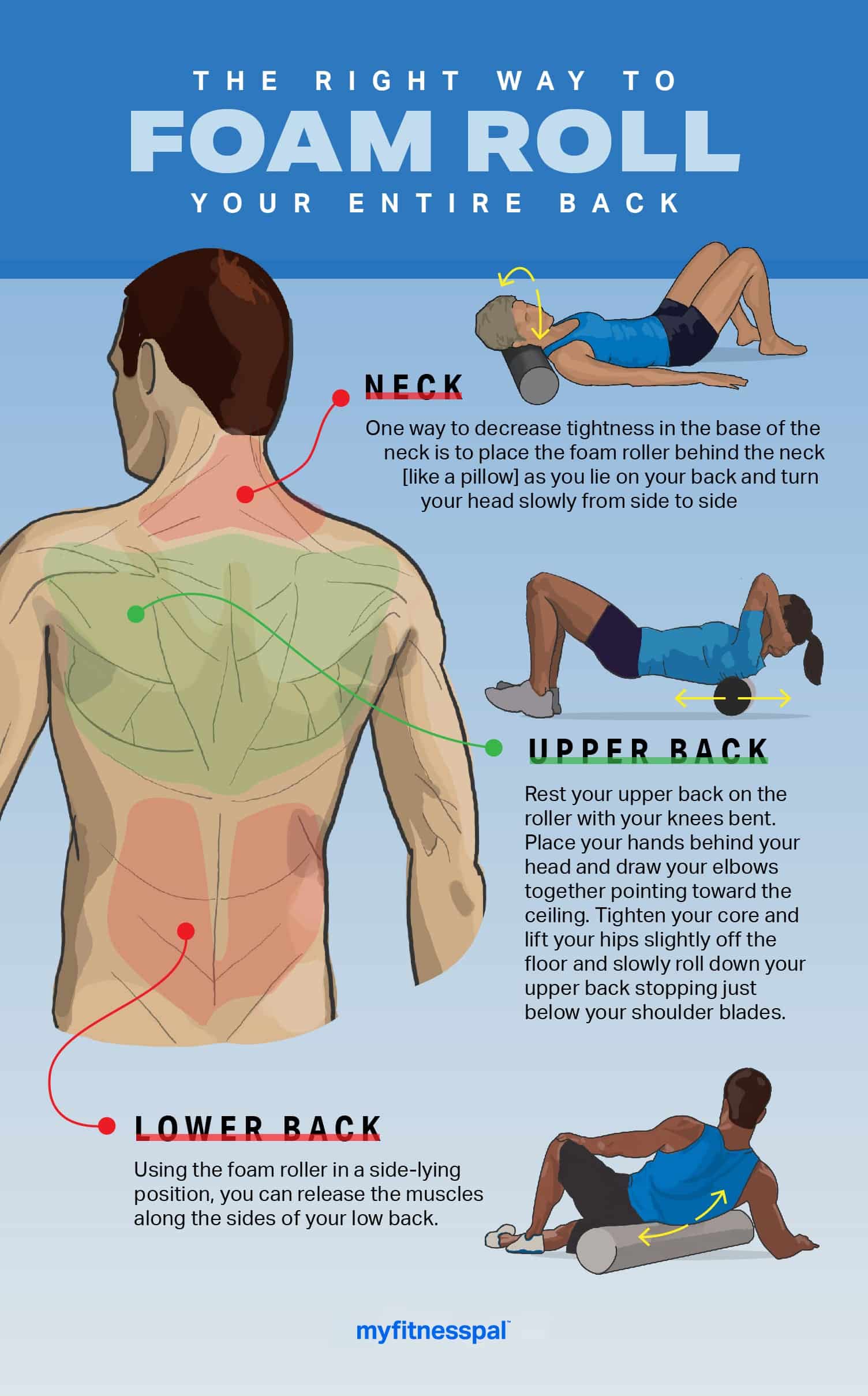Can I Use a Roller on My Back
The Right Way to Foam Roll Your Entire Back

July 26, 2019
These days, virtually every gym, fitness studio and even home workout setup has a foam roller. That's because there are plenty of benefits to foam rolling, from helping to prevent and soothe muscle tightness to maintaining and increasing mobility.
But there's one area of the body that it's pretty controversial to foam roll: the back. Most people aren't aware of the baggage that comes along with foam rolling this area, and while it can be helpful, it's important to do it correctly — otherwise you risk injury or making existing pain worse.
Here's what experts want you to know about how to foam roll your back correctly, section by section.

Directly rolling up and down over the joints in your neck (also known as your cervical spine) is a no-no.
"A lot of people come to us with neck and shoulder tightness and tension and want some relief," says Jessica Tranchina, DPT, physical therapist and founder of the Generator Athlete Lab. "It is OK to roll through the shoulders and mid back, but it puts too much stress on your neck and cervical vertebrae to roll right over the neck. We especially tell people to not roll their necks back over the foam roller, it causes too much tension on the spinal column."
That said, you can use a foam roller to "massage" your neck, but keep in mind the neck is considered a "risky" area to mess with in any sense. If you're dealing with neck pain and want to use a foam roller to help, it's a good idea to visit a qualified physical therapist or practitioner of your choice before getting started.
Try it: "One way to decrease tightness of in the base of the neck is to place the foam roller behind the neck [like a pillow] as you lie on your back and turn your head slowly from side to side," says Fei Jiang, DPT, an orthopedic certified specialist at Providence Saint John's Health Center's Performance Therapy. This gently stretches the neck muscles at the base of the skull and can help decrease upper back pain and headaches that originate from neck issues.
If there's one area experts want you to foam roll, it's your upper back — also known as your thoracic spine. "We spend a lot of time hunched over at computers, preparing food, changing diapers, etc., and our upper backs are stressed in that position," explains Polly de Mille, RN, a registered clinical exercise physiologist and director of sports performance at the Hospital for Special Surgery in New York City.
While the thoracic spine is usually curved outward, hunched posture is an extreme version of what the thoracic spine should look like. Exaggerated hunching can cause stiffness and pain in the upper back and neck region, and mobilizing the area with a foam roller can help loosen things up and provide some relief.
Try it: "Rest your upper back on the roller with your knees bent. Place your hands behind your head and draw your elbows together pointing toward the ceiling. Tighten your core and lift your hips slightly off the floor and slowly roll down your upper back stopping just below your shoulder blades," de Mille instructs. "Curl your trunk forward as you roll so your back is heavy into the roller. You can lean more on the right side of your upper back for a few rolls and then more on the left side. Stop at various spots and slowly side bend right and left."
The lower back, or lumbar spine, is also an area you should approach with caution when it comes to foam rolling. Because it doesn't have the same type of support the thoracic spine gets from the ribs, foam rolling directly over your back, especially while leaning back into the roller, is not recommended.
Try it:There is one way to roll your lower back safely. "Using the foam roller in a side-lying position, you can release the muscles along the sides of your low back," Tranchina says. "This can provide a lot of relief through your low back."
Other strategies that can help relieve lower back pain or tension are rolling your gluteal muscles and piriformis (the muscles in your buttocks), or using a smaller object, like a tennis ball, to target sore or tight lower back muscles on either side of the spine.
Though foam rolling is generally a safe practice, it's important to approach rolling your back with caution. Here are a few more tips for getting the most out of your back foam rolling sessions.
"There are three general different foam roller densities: mild (white), medium (blue) and hard (black)," Jiang notes. "Other variations include ones with ridges and ones that vibrate."
Ultimately, the right roller for you depends on personal preference, but it's important to note more pain is not necessarily better. "If you know your back is more sensitive to pressure, then use the mild dense foam roller, whereas if you like more pressure, use the black foam roller or one with ridges."
There's no single best time to foam roll, but if you're looking for guidance on when to fit it into your day, these are two times that make sense. "If you are about to play a sport that requires thoracic extension such as tennis, then it might make sense to foam roll and stretch beforehand. If you've been sitting at your desk all day or you went on a long bike ride and were hunched over your handlebars for hours, it might make sense to treat your upper back to some foam rolling and stretch your chest afterwards or before you go to bed," de Mille says. Basically, if you can fit it in, do — no matter when."
"People often forget to protect their necks when rolling their backs," Tranchina says. "We recommend supporting the head and neck with clasped hands behind the head and neck."
About the Author

Julia Malacoff Julia (@jmalacoff) is a seasoned writer and editor who focuses on fitness, nutrition, and health. She's also a certified personal trainer and Precision Nutrition Level 1 coach. Based in Amsterdam, she bikes every day and travels around the world in search of tough sweat sessions and the best vegetarian fare.
Related
Source: https://blog.myfitnesspal.com/the-right-way-to-foam-roll-your-entire-back/
0 Response to "Can I Use a Roller on My Back"
Post a Comment